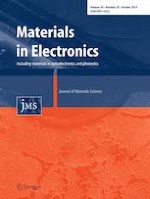21-09-2019
Highly sensitive toxic gas molecule sensor based on defect-induced silicene
Published in: Journal of Materials Science: Materials in Electronics | Issue 20/2019
Log inActivate our intelligent search to find suitable subject content or patents.
Select sections of text to find matching patents with Artificial Intelligence. powered by
Select sections of text to find additional relevant content using AI-assisted search. powered by
